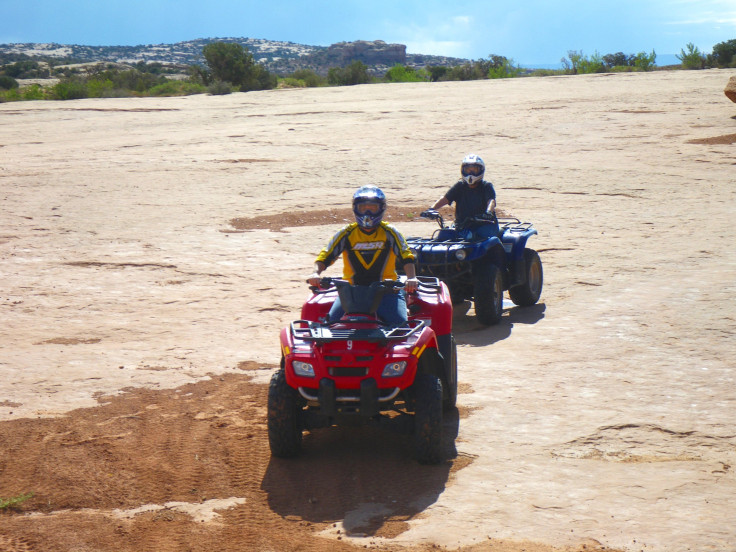Nonfatal Injuries Among Young ATV Riders Drop, Though On-Road Crashes Remain A Concern

The rate of nonfatal injury for children riding all-terrain vehicles (ATVs) fell 22 percent after peaking in 2004, although it is unclear whether it's from increased government safety regulations or declining sales of the vehicles following the recession.
More than 361,000 American children, mostly adolescent boys between the ages of 11 and 15, visited the emergency room for fractures and other injuries, between the 2001 and 2010. A review of national surveillance data by investigators from the U.S. Centers for Disease Control and Prevention found that nonfatal injuries peaked at 67 per 100,000 children in 2004 before declining to 42 per 100,000 by 2010 — with twice as many boys injured than girls.
Fractures accounted for more than one in four emergency room visits and nearly half of all hospitalizations for such nonfatal injuries, the CDC said.
"The reasons for the decline in ATV-related injuries among young riders are not well understood but might be related to the economic recession of the mid-2000s and decreased sales of new ATVs," the researchers wrote. "Although many states have regulations governing children's use of ATVs, their effectiveness in reducing injuries is unclear."
However, the broader use of proven safety measures may help to further reduce the injury rate, including state helmet requirements and restrictions on children riding adult-sized ATVs — or carrying a passenger regardless of circumstances. But most difficult to enforce for police would be any provision on riding on paved roads, something many juvenile ATV riders view as a "Dukes of Hazard" moment.
More than one in 10 American kids had ridden an ATV at least once during the previous year at the beginning of the study period, as the nonfatal injury rate for children 15 and younger continued to rise. By 2010, the rate had fallen even though the country's fleet of ATVs had grown 120 percent to 10.6 million four-wheelers.
"The reductions in nonfatal injuries reported here and the reduction in the proportions of all ATV-related deaths and nonfatal injuries occurring among children point to the possibility that fewer children aged 15 years were riding ATVs over time despite the increase in the number of ATVs in use," the researchers wrote.
At the beginning of the study period, some 11 percent of American kids had ridden an ATV at least once during the previous year, though researchers lack any estimate of current ridership among youth, with another glaring study limitation — data for injuries in Alaska and West Virginia, two states previously known for high ATV ridership, were missing from national surveillance.
In trying to ascertain more information about youth ridership of ATVs, researchers searched futilely through industry literature for any hint of vehicle design changes, reporting that the Vehicle Institute of America, an interest group pushing for "rights" to ride on public land, didn't answer requests for information.
As ATV groups fight environmentalists for access to remote terrain, experts say they worry increasingly about riders taking to the roads, where ATV mishaps are 10 times more likely to involve a collision with another vehicle — and three times more likely to involve multiple injury victims.
Source: Shults RA, West BA, Rudd RA, Helmkamp JC. All-Terrain Vehicle-Related Nonfatal Injuries Among Young Riders In The United States, 2001-2010. Pediatrics. 2013.
Published by Medicaldaily.com



























